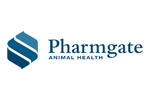

Chad Smith, DVM, Pharmgate Animal Health
Challenges like heat stress or ileitis are top-of-mind in the barn today. But, today’s young pigs will finish after the seasons change. Planning now for seasonal respiratory challenges will help protect the investment you’ve made in your finishers.
Porcine respiratory disease complex (PRDC) is considered by many to be the greatest challenge to pig health. Mycoplasma hyopneumoniae is a common denominator in many forms of PRDC.
“M. hyo is one of those bugs that comes in when you’re right at the finish line,” says Dr. Amy Maschhoff, DVM, associate director of health for The Maschhoffs, LLC. “I hated those calls from our operations team and production partners who had pigs that were ready to go to market when they started hearing a dry, hacking cough.”
Early diagnosis, intervention and implementation of a M. hyo control or elimination program supports profitability by improving pig performance and reducing medication costs. These combined strategies also support the judicious use of antibiotics. Developing an effective plan includes balancing the costs of implementation versus the potential benefits.
Do you have an effective M. hyo control plan in place? Have you been thinking about developing an M. hyo elimination plan? Here are some things to consider to choose the right path for your farm.


Review the details
Now is a good time to review your biosecurity plans and standard operating practices to ensure you’re meeting them consistently. In the case of an M. hyo break, your veterinarian probably will ask about breaks in the routine that might have “opened the door” for the pathogen.
If M. hyo breaks, you can respond faster if you’re prepared to answer these questions:
- When did clinical signs begin?
- What are the signs?
- What percent of the population is affected?
- What have you done so far?
- Has there been any variance in your standard operating practices?
- Did anything out of the ordinary happen? For example, did you have a ventilation outage or a period when pigs couldn’t access water?
This information will help your veterinarian decide what kind of diagnostic samples to collect and how to move forward.
Plan a response
In the case of an outbreak, you have several options for control, including multiple routes of administration. Water-soluble, feed, and injectable medications are the most common.
Questions to help you choose the right formulation include:
- Is the medication I need available in the form I want? Not all antibiotics are available in all forms. A certain product may be labeled for one pathogen in the injectable form but different pathogens in water-soluble or feed medications.
- How many animals do I need to treat today? If it’s just a few, injectables might be the most efficient option. If it’s the whole barn or group of animals, water-soluble delivery might be the better choice.
- What is the animals’ health status? If pigs are already sick and stressed, the additional stress to administer an antibiotic via an injection is not desirable. Sick pigs typically continue to drink water initially after appetites drop, thus supporting water medications as a flexible option.
Read troubleshooting tips about water-soluble medication delivery.
Elimination takes time
Some operations find greater value in M. hyo elimination rather than control. One difference between the two strategies is the time and labor commitment needed to execute.
“When you develop a plan to eliminate Mycoplasma from your herd, you have to think about time,” Maschhoff says. “You have to match your closure time to what we know about the science of Mycoplasma shedding time.”
Shedding can last more than 200 days, and the time commitment to eliminating M. hyo from a sow farm is about 40 weeks, Maschhoff says. It’s important to consider the additional labor needs for a herd closure in addition to your team’s day-to-day workload.
The commitment can pay off. For the Maschhoffs, benefits have included marketing pigs 10 to 14 days faster and “substantial” savings on the cost of medications for finishing pigs. The break-even has run from 18 to 26 months after M. hyo elimination in a sow herd, Maschhoff said.
Take control
One choice for the control of SRD is Aivlosin® Water Soluble Granules, which was approved this year for the control of Mycoplasma hyopneumoniae, giving it the broadest label indication for the control of swine respiratory disease.
Talk to your veterinarian about Mycoplasma hyopneumoniae control or elimination or email questions to swinehealthline@pharmgate.com.






